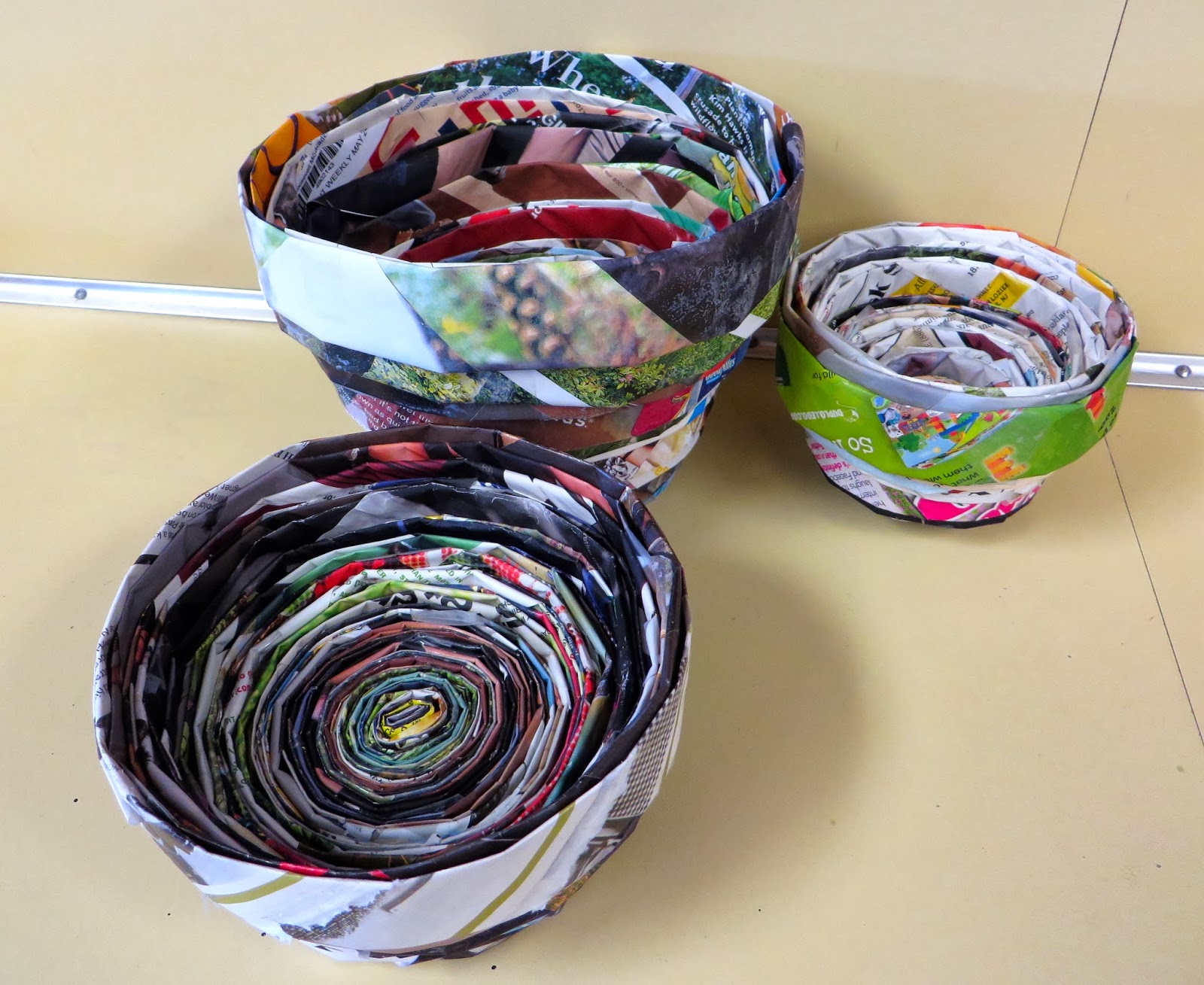Our first project this quarter focused on the elements of art. I wanted to review the elements and begin to identify and discuss them during art history, so I had the students take some notes on a Power Point. I assigned an open-ended, get to know your style project, that demonstrated one or more of the elements of art. Students were asked to sketch their project, experiment with the materials they planned to use, and identify which elements would be their focus; Color, Value, Line, Shape, Form, Texture and/or Space. The results were interesting and provided insight about students' interests.
Art Ed
Tuesday, February 11, 2014
Sunday, January 12, 2014
3D Forms: Recycled Magazine Bowls & Ceramics
We had a great time creating recycled magazine bowls and working on our clay projects. We learned about symmetrical, asymmetrical and radial balance and how to identify each when looking at a piece of artwork.
Saturday, December 7, 2013
Contour Line Drawing & Value Collage
Teaching contour
line drawing can be a challenge. Looking
at an object and following the line, your eye and hand working together, is
difficult and takes practice. We created several contour line drawings and practiced until students became comfortable with the technique, then discussed adding value. We also discussed the principle of unity and how it can be created through color,
shape, texture, pattern or subject. The collage was to successfully demonstrate unity and
incorporate a contour line drawing. The students were encouraged to choose whatever art materials and paper available to create their collage. The results were interesting and varied. Many students tried techniques
they had never worked with before. I love to see experimentation lead to unique and
unexpected results that students enjoy.
Saturday, November 23, 2013
Teaching Art
Substitute
teaching has been my life since last January when I received my teaching
license. I have been all over four separate school districts. I
usually end up in the art room, so I have a great opportunity to see what other
teachers are doing in their art studios. There are certain rooms that are
better, more conducive to teaching and learning art. Some of these places are
poorly managed and completely unorganized, making substitute teaching more
challenging then it should be. Other rooms are perfect with several sinks and
natural lighting. I really hope I can find a job where the space is ideal for
creating art.
I was offered the
opportunity to work a long-term assignment and I was very excited to start. Not
just because knowing where you are going everyday is a better way to work, but
I'm substituting for a great art teacher, in an ideal space and provided the
opportunity to teach my own lessons. She also embraces a teaching philosophy
called Teaching for Artistic Behavior. I have read as much as I can about this
method and find it completely refreshing and much more authentic then many of
the methods currently embraced by art teachers.
For example, I
walk into a school and the hallway is lined with nearly identical pieces of
artwork. Sun in the corner, identical hills made of the same colored paper.
Perhaps a student was ambitious at added something different, but the project
was about following directions rather then exploring your own style and natural
selection of materials. Directions are important as a guideline for success, but
art should never be a task that is a result of force. Nothing is better than
seeing a student excited about a project because they're intrinsically
motivated. They ask you questions about mixing materials and how to create the
work they are interested in making. It is student directed rather then a
formulaic project chosen by the teacher.
“I want to paint
today.” “Sorry, we are only using crayons for this project.” It feels wrong to
tell a student they can’t use an art material to express their own ideas. I
know how much art materials cost, so I understand the tendency to keep them put
away, but I am also very curious about the potential project this student will
create, given the opportunity to choose freely.
The art class just
completed a landscape project. They demonstrated many of the ideas I stressed.
Large objects are close, small objects are far away. The idea of creating foreground,
middle ground and background was demonstrated by the majority of students. They
were given the opportunity to use whatever art material they wanted to
experiment with and whatever color and size of paper they wanted to use.
We had
a group critic where students chose a landscape they feel was successful and
then asked to explain their choices. We had some great conversations about how
the artist created their work. One student was amazed by the result of layering
crayon and watercolor to create a reflection in water. The student asked the
artist how it was created and the process was explained. The whole class was
listening and engaged because they were impressed by the work. A student
teaching other students is a great method of learning.
Tuesday, December 4, 2012
A Reflection on Student Teaching
-->
I feel very
fortunate to have been placed with talented art educators that I admire. They
are passionate about teaching art and have provided me with many resources that
I will bring into my own classroom. I have had the opportunity to overcome
several challenges and feel that I have learned a great deal about being an effective
art educator.
The opportunity to
put together a great set of successful lesson plans has also been of benefit
and I was able to add some helpful notes for future improvements the next time
I present the lesson. As I continue to teach art, the whole process becomes
smoother and more efficient, & I have gained a great amount of confidence
in my abilities.
Sunday, December 2, 2012
Subscribe to:
Posts (Atom)














































